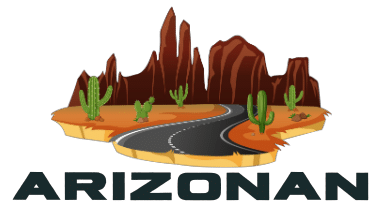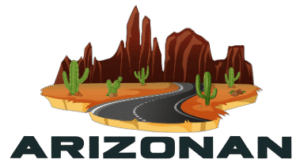Gila Bend, Arizona
Introduction
Gila Bend, Arizona, is a small town located in Maricopa County, approximately 70 miles southwest of Phoenix. With a population of around 2,000 residents, Gila Bend is known for its desert landscape, rich history, and close proximity to several popular outdoor recreation areas. The following overview will touch upon some of the key aspects of Gila Bend, including its history, location, economy, and attractions.
Thank you for reading this post, don't forget to subscribe!Gila Bend was founded in the 19th century and was named for the sharp bend in the Gila River, which flows through the town. The area has a rich history, with evidence of Hohokam and Tohono O’odham Native American settlements. In the 1800s, Gila Bend became an important stop on the Butterfield Overland Mail route and later the Southern Pacific Railroad.
Apache Junction was officially incorporated as a city in 1978. Over the years, the city has grown and developed, with new businesses and residential communities springing up. Today, Apache Junction is a thriving city that offers a high quality of life for its residents while preserving its rich history and natural beauty.
Gila Bend is located along Interstate 8, making it easily accessible for travelers. Its close proximity to Phoenix, Yuma, and the Mexican border makes Gila Bend a convenient stop for those traveling through the region.
The economy of Gila Bend primarily revolves around agriculture, transportation, and tourism. Key agricultural products produced in the area include cotton, alfalfa, and various types of vegetables. Additionally, Gila Bend serves as a transportation hub due to its location along Interstate 8 and the Union Pacific Railroad.
In recent years, Gila Bend has also attracted interest from renewable energy companies, with the establishment of several solar power plants in the area, such as the Solana Generating Station and the Cotton Center Solar Plant.
Gila Bend is served by the Gila Bend Unified School District, which includes Gila Bend Elementary School and Gila Bend High School. The schools offer a well-rounded education to students, along with extracurricular activities and sports programs. For those seeking higher education opportunities, nearby institutions include Arizona Western College in Yuma and various colleges and universities in Phoenix.
Gila Bend is home to Adelante Healthcare Gila Bend, a community health center that provides primary care, dental services, and behavioral health services to the residents. For more specialized medical care, residents can access larger hospitals and medical facilities in Phoenix and Yuma.
The real estate market in Gila Bend offers a mix of single-family homes, townhouses, and apartments. Due to its small size and rural location, property prices in Gila Bend are generally lower than in the larger metropolitan areas of Arizona. The town has experienced some growth in recent years, with new housing developments and infrastructure improvements.
Attractions and Points of Interest
Despite its small size, Gila Bend offers a number of interesting attractions and points of interest, including:
– Painted Rock Petroglyph Site: This historic site features over 800 ancient petroglyphs, created by the Hohokam people between 300 and 1400 CE. Visitors can explore the site via a short hiking trail and learn about the area’s history and cultural significance.
– Gatlin Archaeological Site: This site contains the ruins of a Hohokam village, dating back to the 9th century. The area is not open to the public, but a nearby roadside exhibit provides information about the site and its history.
– Gila Bend Historic Museum: This small museum provides a glimpse into the history of Gila Bend, showcasing artifacts, photographs, and exhibits related to the town’s past.
– Organ Pipe Cactus National Monument: Located about 70 miles south of Gila Bend, this national monument protects a unique Sonoran Desert ecosystem that is home to the rare organ pipe cactus. The park offers scenic drives, hiking trails, and opportunities for wildlife viewing.
Outdoor Recreation
The desert landscape surrounding Gila Bend offers numerous opportunities for outdoor enthusiasts. Popular activities in the area include hiking, mountain biking, and off-roading. Nearby parks and recreation areas, such as the Barry M. Goldwater Range and the Sonoran Desert National Monument, provide additional options for exploring the region’s natural beauty.
In summary, Gila Bend, Arizona, is a small town with a rich history and a unique desert landscape. Its close proximity to major transportation routes, outdoor recreation areas, and renewable energy projects make it an interesting destination for visitors and a key player in the regional economy.
Things to Do
In addition to the attractions and points of interest mentioned earlier, Gila Bend offers a variety of activities and events for residents and visitors to enjoy:
– Annual Shrimp Festival: Held every November, this festival celebrates the local shrimp farming industry with food, live music, and family-friendly activities.
– Gila Bend KOA Journey: This family-friendly campground offers RV sites, tent sites, and cabins, as well as amenities like a swimming pool, playground, and laundry facilities. Guests can also enjoy hiking and biking trails, as well as easy access to nearby attractions.
Government Structure
Gila Bend operates under a council-manager form of government, with a mayor and six council members elected to four-year terms. The town manager is responsible for overseeing the day-to-day operations of the town and implementing the policies set by the town council. Key departments within the Gila Bend government include Public Works, Planning and Zoning, and Parks and Recreation.
Clubs and Organizations
Gila Bend is home to various clubs and organizations that contribute to the town’s sense of community. Some notable groups include the Gila Bend Chamber of Commerce, the Gila Bend Lions Club, and the Gila Bend Rotary Club.
Climate
Gila Bend has a hot desert climate, with extremely hot summers and mild winters. The town receives very little rainfall, averaging just 6 inches per year. Temperatures in the summer often exceed 100°F (38°C), while winter temperatures range from the 40s to 70s°F (4-21°C).
Community Involvement
Gila Bend residents have many opportunities to get involved in their community, from volunteering at local events to participating in town council meetings. The town also hosts regular community events, such as holiday celebrations and neighborhood clean-up days, which encourage residents to come together and support one another.
Sports and Recreation
Gila Bend offers a variety of recreational facilities for residents and visitors to enjoy, including parks, sports fields, and playgrounds. The Gila Bend Community Center provides space for fitness classes, sports leagues, and other recreational activities.
Dining and Nightlife
While Gila Bend may be small, it still offers a selection of dining options, including Mexican restaurants, diners, and fast-food chains. Nightlife in Gila Bend is limited, but visitors can find bars, live music, and other entertainment options in nearby cities like Phoenix and Yuma.
Ranching and Farming
Ranching and farming have long been important industries in Gila Bend, with local farmers and ranchers producing a variety of crops and livestock. The surrounding desert landscape also provides ample opportunities for horseback riding and exploring the area’s ranching heritage.
Off-road trips
The desert terrain around Gila Bend is perfect for off-road adventures. Visitors can rent ATVs or off-road vehicles to explore the rugged landscape, or join guided tours for a more structured experience. Popular off-roading destinations include the Barry M. Goldwater Range and the Sonoran Desert National Monument.
Overall, Gila Bend, Arizona, offers a unique blend of history, natural beauty, and community spirit. Its close proximity to major cities and transportation routes makes it an attractive destination for visitors and a convenient place to call home for its residents.
Local Festivals and Events
In addition to the Annual Shrimp Festival mentioned earlier, Gila Bend hosts various local festivals and events throughout the year that bring the community together and attract visitors:
– Gila Bend Butterfield Stage Days Rodeo: This annual event celebrates the town’s rich history with a professional rodeo, parade, and various family-friendly activities. The event typically takes place in February, drawing crowds of locals and visitors alike.
– Gila Bend Art Walk: Held annually in the spring, the Gila Bend Art Walk showcases local artists and their work, including paintings, sculptures, and photography. The event also features live music, food vendors, and activities for children.
Notable Residents
Several notable individuals have lived in or have ties to Gila Bend, including:
– Waylon Jennings: The late country music legend was born in Littlefield, Texas, but lived in Gila Bend for part of his life. Jennings is known for his contributions to the outlaw country movement and his collaborations with other artists like Willie Nelson, Johnny Cash, and Kris Kristofferson.
– Henry Chee Dodge: The last Navajo chief and the first chairman of the Navajo Tribal Council, Dodge was born near Gila Bend in 1860. He played a significant role in the development of the Navajo Nation and its government.
Sustainability and Environmental Initiatives
Gila Bend is committed to promoting sustainability and environmental stewardship. Some of the town’s initiatives include:
– Solar Power: As mentioned earlier, Gila Bend is home to several solar power plants, which contribute to reducing greenhouse gas emissions and promoting the use of renewable energy resources. The town has also implemented solar-powered streetlights and encourages residents and businesses to consider solar energy options.
– Water Conservation: Gila Bend promotes water conservation efforts through public education, rebates for water-saving appliances, and the implementation of water-efficient landscaping in public spaces.
Public Art and Cultural Attractions
Despite its small size, Gila Bend features a variety of public art installations and cultural attractions that showcase the town’s history and creativity:
– Gila Bend Murals: Throughout the town, visitors can find a series of murals depicting scenes from Gila Bend’s history, as well as images that celebrate its desert landscape and wildlife.
– Gila Bend Sculpture Garden: This outdoor sculpture garden features a variety of unique metal sculptures created by local artists. The garden is open to the public and offers a relaxing space for reflection and appreciation of the arts.
Transportation and Accessibility
Gila Bend benefits from its location along major transportation routes, making it easily accessible for residents and visitors. Interstate 8 connects Gila Bend to Phoenix, Yuma, and the Mexican border, while the Union Pacific Railroad provides freight transportation services. Although Gila Bend does not have its own public transportation system, nearby cities like Phoenix offer extensive public transit options, including buses, light rail, and commuter trains.
Horseback Riding
The desert landscape surrounding Gila Bend provides ample opportunities for horseback riding enthusiasts. Local ranches and equestrian centers offer guided trail rides, lessons, and horse boarding services. Exploring the area on horseback allows visitors to experience the beauty of the Sonoran Desert up close and personal.
In conclusion, Gila Bend, Arizona, is a small town with a big heart, offering a unique blend of history, natural beauty, and community spirit. Its close proximity to major cities and transportation routes, combined with its diverse recreational opportunities and commitment to sustainability, makes Gila Bend an attractive destination for visitors and a great place to call home for its residents.

